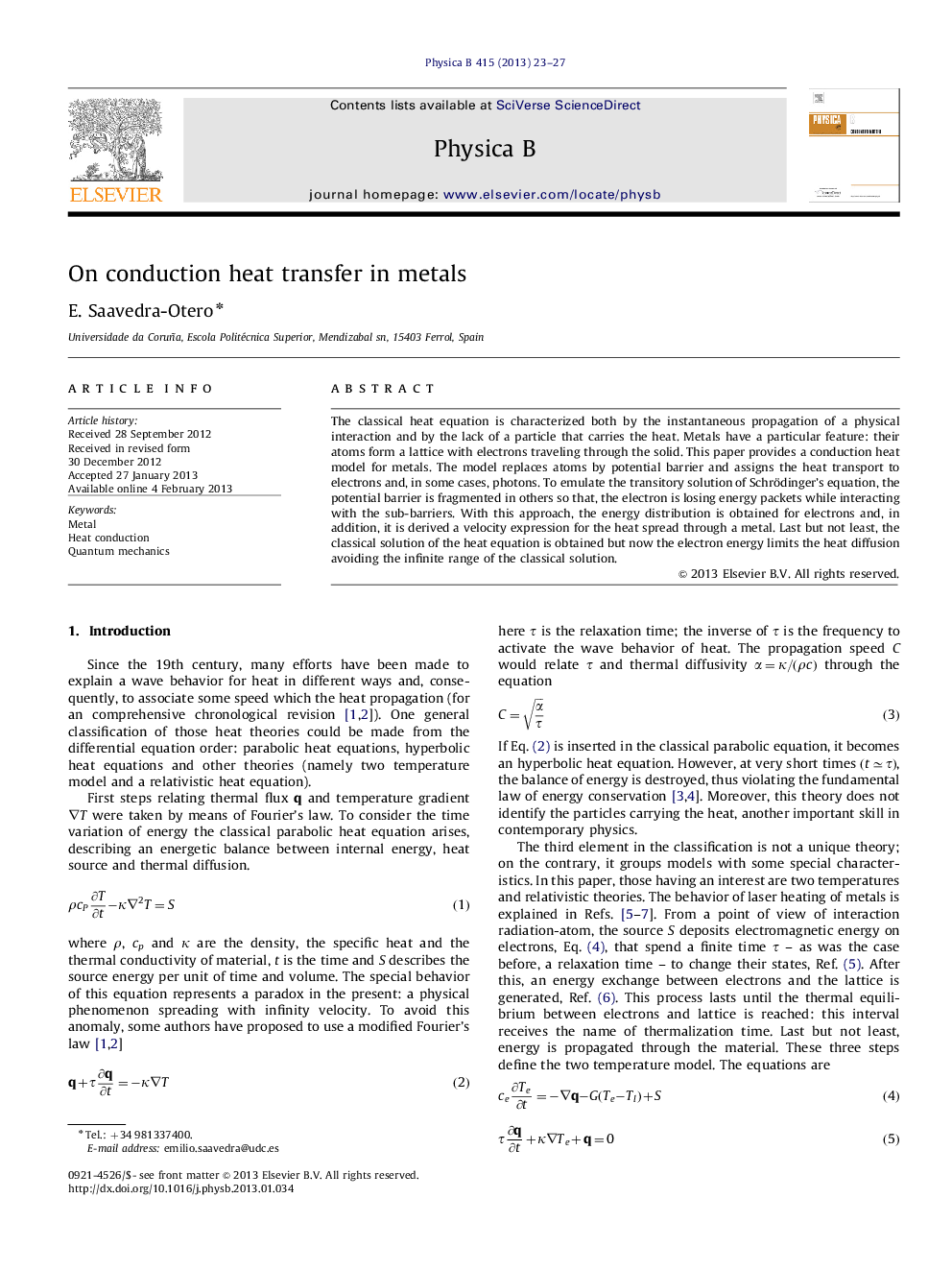| Article ID | Journal | Published Year | Pages | File Type |
|---|---|---|---|---|
| 8163445 | Physica B: Condensed Matter | 2013 | 5 Pages |
Abstract
The classical heat equation is characterized both by the instantaneous propagation of a physical interaction and by the lack of a particle that carries the heat. Metals have a particular feature: their atoms form a lattice with electrons traveling through the solid. This paper provides a conduction heat model for metals. The model replaces atoms by potential barrier and assigns the heat transport to electrons and, in some cases, photons. To emulate the transitory solution of Schrödinger's equation, the potential barrier is fragmented in others so that, the electron is losing energy packets while interacting with the sub-barriers. With this approach, the energy distribution is obtained for electrons and, in addition, it is derived a velocity expression for the heat spread through a metal. Last but not least, the classical solution of the heat equation is obtained but now the electron energy limits the heat diffusion avoiding the infinite range of the classical solution.
Related Topics
Physical Sciences and Engineering
Physics and Astronomy
Condensed Matter Physics
Authors
E. Saavedra-Otero,
